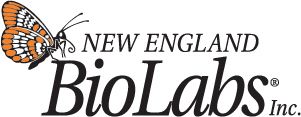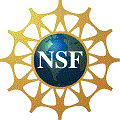Team:BU Wellesley Software
From 2011.igem.org
(Difference between revisions)
| Line 107: | Line 107: | ||
<h3><div class="intro_greeting">Synthetic biology will require a multidisciplinary, collaborative design environment in order to engineer the complex biological systems of the future. Our team has created a collection of software tools which address specific technical synthetic biology challenges while simultaneously advancing the way in which users interact with computing environments. Our software workflow comprises "G-Nome Surfer Pro" for research, "Trumpet" and "Optimus Primer" for design, and "Puppeteer" and "E-LabNotebook" for the construction of those designs. In addition, we incorporated wetlab elements into our project to apply these tools to create novel biological systems to investigate tuberculosis. The combination of human computer interaction, bio-design automation, and wet lab experimentation makes our effort unique in the iGEM experience and closes the loop on the design-test-build methodology. | <h3><div class="intro_greeting">Synthetic biology will require a multidisciplinary, collaborative design environment in order to engineer the complex biological systems of the future. Our team has created a collection of software tools which address specific technical synthetic biology challenges while simultaneously advancing the way in which users interact with computing environments. Our software workflow comprises "G-Nome Surfer Pro" for research, "Trumpet" and "Optimus Primer" for design, and "Puppeteer" and "E-LabNotebook" for the construction of those designs. In addition, we incorporated wetlab elements into our project to apply these tools to create novel biological systems to investigate tuberculosis. The combination of human computer interaction, bio-design automation, and wet lab experimentation makes our effort unique in the iGEM experience and closes the loop on the design-test-build methodology. | ||
<br></h3> | <br></h3> | ||
| - | Welcome to our site!<br></div> | + | <!--Welcome to our site!--><br></div> |
<!-- | <!-- | ||
| Line 134: | Line 134: | ||
<br><br> | <br><br> | ||
<p style="text-align:center;"><img src="http://cs.wellesley.edu/~hcilab/iGEM_wiki/images/finaltlogoForWebsite.jpg" width="800px"></p> | <p style="text-align:center;"><img src="http://cs.wellesley.edu/~hcilab/iGEM_wiki/images/finaltlogoForWebsite.jpg" width="800px"></p> | ||
| + | |||
| + | <br> | ||
| + | <h3><div class="intro_greeting">Synthetic biology will require a multidisciplinary, collaborative design environment in order to engineer the complex biological systems of the future. Our team has created a collection of software tools which address specific technical synthetic biology challenges while simultaneously advancing the way in which users interact with computing environments. Our software workflow comprises "G-Nome Surfer Pro" for research, "Trumpet" and "Optimus Primer" for design, and "Puppeteer" and "E-LabNotebook" for the construction of those designs. In addition, we incorporated wetlab elements into our project to apply these tools to create novel biological systems to investigate tuberculosis. The combination of human computer interaction, bio-design automation, and wet lab experimentation makes our effort unique in the iGEM experience and closes the loop on the design-test-build methodology. | ||
| + | <br></h3> | ||
| + | <!--Welcome to our site!--><br></div> | ||
<br><br><br><br><br><br> | <br><br><br><br><br><br> | ||
Revision as of 23:06, 27 September 2011
Welcome!
Synthetic biology will require a multidisciplinary, collaborative design environment in order to engineer the complex biological systems of the future. Our team has created a collection of software tools which address specific technical synthetic biology challenges while simultaneously advancing the way in which users interact with computing environments. Our software workflow comprises "G-Nome Surfer Pro" for research, "Trumpet" and "Optimus Primer" for design, and "Puppeteer" and "E-LabNotebook" for the construction of those designs. In addition, we incorporated wetlab elements into our project to apply these tools to create novel biological systems to investigate tuberculosis. The combination of human computer interaction, bio-design automation, and wet lab experimentation makes our effort unique in the iGEM experience and closes the loop on the design-test-build methodology.

Synthetic biology will require a multidisciplinary, collaborative design environment in order to engineer the complex biological systems of the future. Our team has created a collection of software tools which address specific technical synthetic biology challenges while simultaneously advancing the way in which users interact with computing environments. Our software workflow comprises "G-Nome Surfer Pro" for research, "Trumpet" and "Optimus Primer" for design, and "Puppeteer" and "E-LabNotebook" for the construction of those designs. In addition, we incorporated wetlab elements into our project to apply these tools to create novel biological systems to investigate tuberculosis. The combination of human computer interaction, bio-design automation, and wet lab experimentation makes our effort unique in the iGEM experience and closes the loop on the design-test-build methodology.








 "
"
